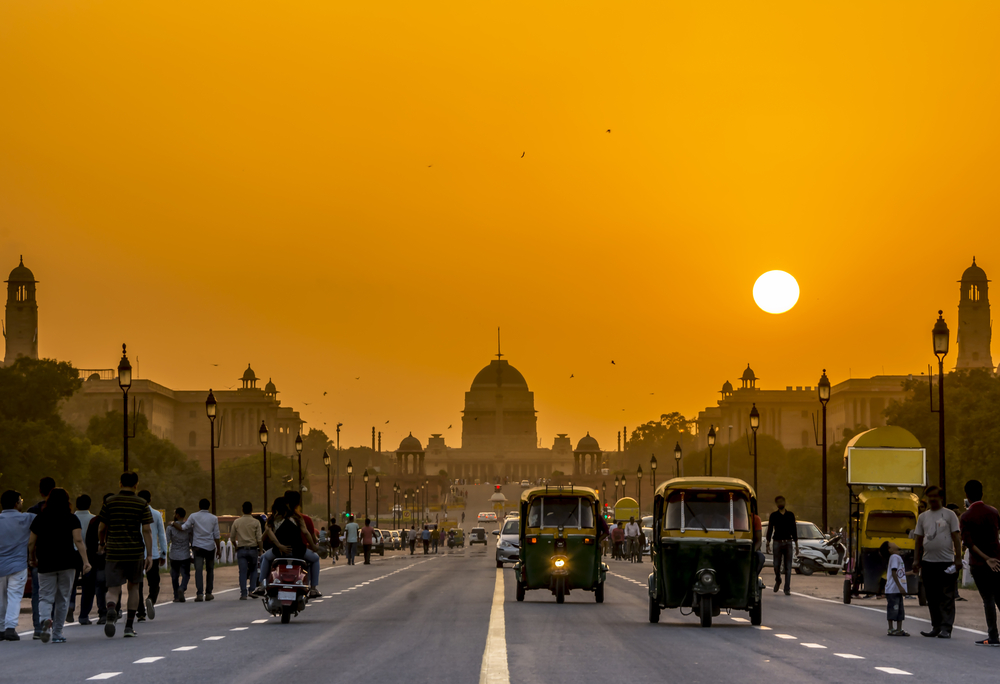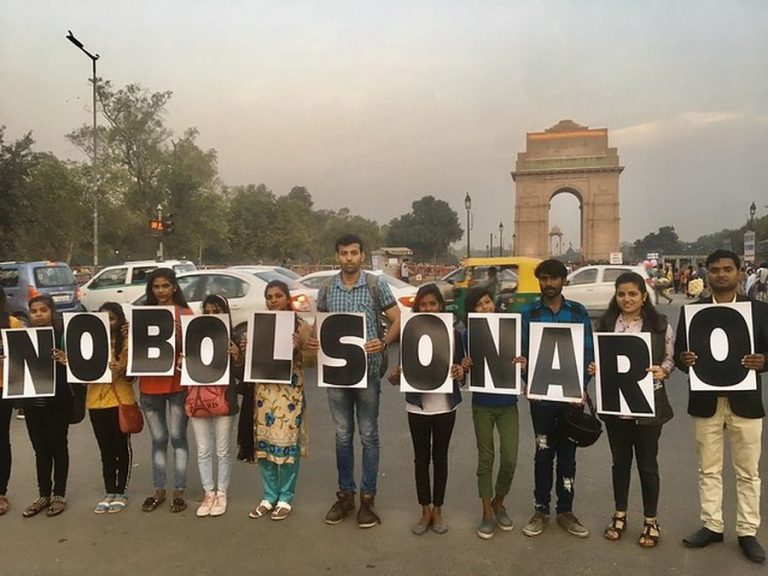RIO DE JANEIRO, BRAZIL – Indian rural producers launched a campaign last weekend against the presence of Brazilian President Jair Bolsonaro at the Republic of India Day celebrations, due to take place on January 26th.
The action #GoBackBolsonaro was launched by the Federation of Sugarcane Producers of India and has the support of All India Kisan Sabha, the largest farmers lobby in the country, founded in 1936.

The slogan in repudiation of Bolsonaro’s presence will be displayed on black banners and flags displayed over the cultivated areas. The purpose of the campaign is to demand the withdrawal of the invitation made to Bolsonaro by the Indian government to attend the celebration.
“Our protest will also be an act of solidarity in support of the Brazilian people, who protest against their corrupt and repressive regime,” the federation said in a statement.
Bolsonaro will board to India next Friday, January 24th, at the invitation of Prime Minister Narendra Modi, also a far-right politician. Republic Day is a celebration of the date when the Indian Constitution came into force in 1950.
Motivations
The protest of the Indian farmers is politically and economically motivated.
The first part of the note released by the sugarcane producers’ federation states that Bolsonaro “adheres to a far-right-wing ideology” and is “increasingly authoritarian”.
“We are witnessing his destructive and exploitative policies in Brazil, including the opening of doors to corporate plundering of the Amazon rainforest,” reads the campaign’s launch text.
From an economic perspective, Indian farmers claim that the Brazilian government’s stance at the World Trade Organization (WTO) directly affects their livelihoods.
Brazil, Australia and Guatemala have questioned the Indian government’s protectionist measures at the WTO to benefit sugarcane producers. The argument is that the subsidy granted by India exceeds the limit allowed internationally.
On the other hand, the farmers claim that the calculation basis used by these countries considers the import and export values of the 1980s, ignoring the inflation of the period.

To support their claim, Indian farmers mention in the campaign’s launch note that they have not received the minimum subsidies provided for in the country’s legislation – called fair prices and remuneration – from the local government.
“If the WTO takes a decision against India, (…) local production will drop and we will be pushed to import sugar,” says the federation. “In the absence of current support policies, the sugar cane sector, which employs more than 50 million farmers and more than 500,000 workers in sugar mills, could face imminent collapse,” it cautions.
Sugar will be one of the key issues of Bolsonaro’s visit to India. Last week, the Brazilian president met with representatives of the Sugarcane Industry Union (UNICA), which comprises ruralists in the sector.
During the meeting, he said Brazil is studying ways to support India in strengthening its ethanol program, including ways to increase biofuel production and its blending with gasoline, which could reduce sugar stocks in the Asian country and boost sugar prices on the international market.
The volume of sugar exported by Brazil in July 2019 was at its lowest in five years – about 28 percent less than last year and 63 percent less than in 2017.

